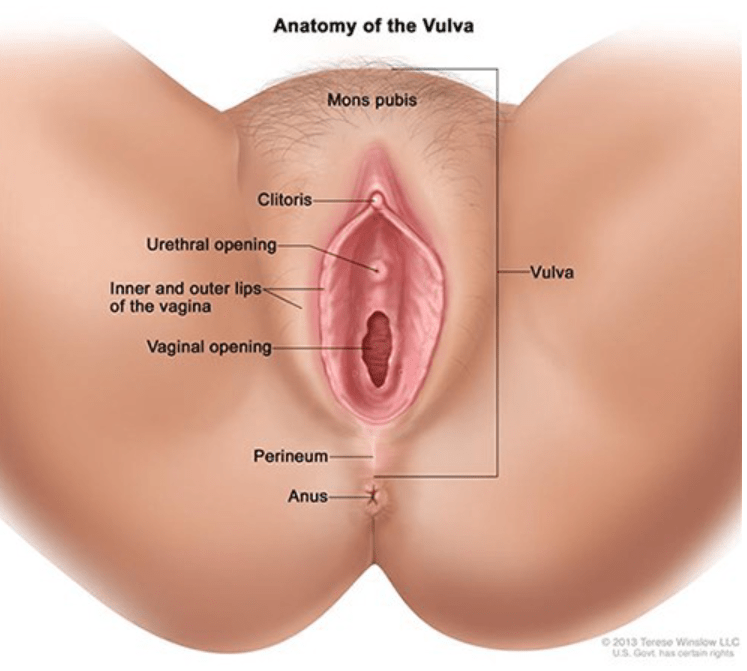How to fix odor “down there”.
Let’s face it. Humans sometimes stink. Our genitals, butts, and armpits do not always smell like roses. Women expect postworkout smelly armpits, but no one is happy when the pungent odor comes from the vagina.
So, what causes the “not so fresh” feeling?
Sweat, food intake, medications, and hormonal changes all alter vaginal scent, but the most common cause of an unpleasant vaginal odor is an overgrowth of normal vaginal bacteria called bacterial vaginosis.
Bacterial vaginosis is easy to treat with antibiotics, but the crucial step is to confirm the diagnosis with a medical provider. Self-diagnosing often leads to errors. The malodorous situation “down there” will not improve if we are not treating the right thing.
While most women will get bacterial vaginosis at some point in their life, everyone wants to know why BV happens and how to get rid of it.
What is bacterial vaginosis (BV)?
Bacterial vaginosis (BV) is not an infection in the traditional sense, but rather a condition caused by an overgrowth of anaerobic bacteria living in the vagina.
Vaginal bacteria are supposed to be present. Bacteria live on our skin, mouths, and gastrointestinal tracts all the time. These healthy bacteria help keep our body systems running smoothly. The vagina always contains small amounts of healthy, protective bacteria.
Vaginal bacteria and yeast live in perfect harmony, maintaining the vaginal ecosystem. Bacteria and yeast work to keep the vaginal chemistry pH balanced in the healthy range between 3.5–5.5.
Periodically, something disruptive happens to break the chemical balance allowing bacteria to flourish. When bacteria outgrows the counterbalancing yeast, women develop bacterial vaginosis.
When vaginal bacteria overpower and suppress yeast, women will notice a gray or yellow, fishy smelling discharge.
Who is at risk for bacterial vaginosis?
BV is the most common vaginal condition, and any woman can get it. BV is more common in sexually active women, but it is not a sexually transmitted infection.
BV is most common in ages 15 to 44, but it can happen at any age and in women who do not have sex.
The risk of bacterial vaginosis increases with:
- New sexual partners. This is most likely due to changes in the vaginal flora.
- Multiple sex partners. This is also thought to be due to alterations in vaginal flora.
- Inconsistent sexual activity or a change in a sexual routine
- Vaginal Douching. Douching disrupts the vaginal ecosystem by altering the vaginal acidity allowing bacteria to grow.
- Sex without condoms. Semen raises the vaginal pH allowing creating a hospitable bacterial environment.
- Pregnancy. 25% of pregnant women develop episodic bacterial vaginosis due to hormonal changes in the vaginal chemistry.
- Racial differences BV is twice as likely in black women. Scientists do not know the exact reasons, but research indicates differences in the vaginal biome may be the underlying cause. White women tend to have higher levels of protective lactobacillus.
- Irregular vaginal bleeding or frequently spotting. Blood raises the vaginal pH allowing bacteria to thrive. Infections, polyps, and fibroids are common causes of abnormal uterine bleeding.
What are the symptoms of BV?
BV symptoms vary from person to person. While some may have no symptoms, others will notice a fishy vaginal odor, vulvar irritation, or discomfort with urination. Some experience a watery or foamy white, yellow, or gray vaginal discharge.
These symptoms are often confused with STIs and vaginal yeast infections. Seeing your doctor or practitioner is the only way to determine if you have a BV and not a more severe problem.
The signs and symptoms of a BV are similar to other more serious infections. Trichomoniasis is a common STI that also causes itching and vaginal odor.
If left untreated, STIs and BV raise your risk of getting other STIs, including HIV. Untreated gonorrhea and chlamydia can lead to problems getting pregnant. BV can also lead to problems during pregnancy, such as preterm labor and premature delivery.
How is bacterial vaginosis diagnosed?
A doctor will do a pelvic exam to look for the characteristic discharge. The doctor may also use a cotton swab to take a sample of the discharge from the vagina.
A test can be done to see if the pH is elevated. The providers may add a chemical called KOH to perform a Whiff test. (Yes, this involves smelling the discharge). Finally, the provider may look at the sample under a microscope to evaluate for a particular finding called clue cells.
Nucleic acid amplification microbial testing is a widely available rapid test technology to help distinguish between yeast, bacterial vaginosis, and trichomoniasis.

How is bacterial vaginosis treated?
BV is treated with prescription antibiotics. Metronidazole pills or vaginal gel are the most common. Clindamycin is a common acceptable alternative.
Sex partners do not need to be treated.
Patients suffering from recurrent bacterial vaginosis may qualify for more robust treatment protocols.
Many times, BV will resolve on its own. Vaginas are very effective at self-correcting. Untreated BV increases the risk of getting HIV, genital herpes, gonorrhea, chlamydia, and pelvic inflammatory disease. Women with HIV who get BV are also more likely to pass HIV to a male sexual partner.
Is it safe to treat pregnant women who have BV?
The medicine used to treat BV is safe for pregnant women at any stage of pregnancy. All pregnant women with symptoms of BV should be tested and treated. Some evidence indicates a link between BV and preterm birth.
How can I lower my risk of BV?
Researchers do not know exactly what causes BV, but we know ways to help the vagina maintain a normal pH and reduce the risk of BV. Steps include:
- Keeping your vaginal bacteria balanced. Use warm water to clean the outside of your vagina. Always wipe front to back from your vagina to your anus. Keep the area cool by wearing cotton or cotton-lined underpants.
- Fix irregular bleeding. Blood in the vagina raises the pH. A gynecologist can help find a solution to abnormal uterine bleeding and spotting. Fixing the blood exposure often eliminates recurrent bacterial vaginosis.
- Avoid douching. Douching wipes out the balance of good and harmful bacteria in your vagina.
- Not having sex. Abstaining from sex is not a popular option for some, and you can get BV without having sex. But BV is more common in women who have sex.
- Pull out. Semen raises the vaginal pH. Women with recurrent BV may want to have their male partner withdraw the penis prior to ejaculating inside the vagina.
- Limiting your number of sex partners. Research indicates an increased BV risk with multiple partners.
Thank you Sexography for publishing this article on Medium. Article originally published on Medika Life.
Blog Author: Dr. Jeff Livingston
Main Blog Photo By: Giulio_Fornasar stock by Getty












